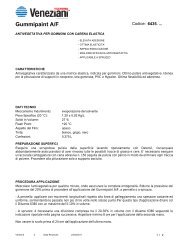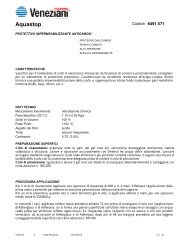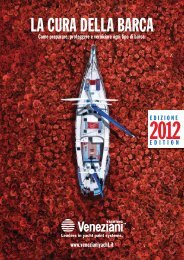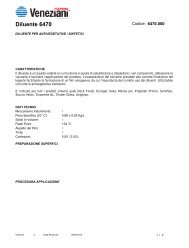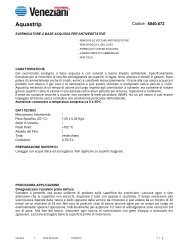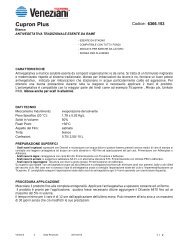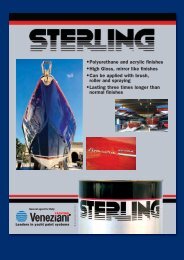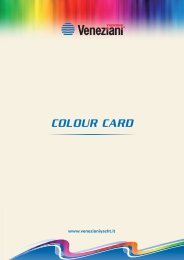3 - Veneziani Yacht Paints
3 - Veneziani Yacht Paints
3 - Veneziani Yacht Paints
Create successful ePaper yourself
Turn your PDF publications into a flip-book with our unique Google optimized e-Paper software.
SANDING<br />
Always wet sand, this means you<br />
must first wet the surface and<br />
sandpaper with water. This reduces<br />
the amount of dust produced<br />
(especially from the antifouling which<br />
can be dangerous). Always wear<br />
a mask, gloves and goggles when<br />
sanding.<br />
Parts still covered by old paint must<br />
be sanded.<br />
Follow the steps below:<br />
• hull: sand with 80 grade sandpaper,<br />
always wet, and roughen the<br />
entire surface of the old antifouling,<br />
leaving the undercoat intact.<br />
• topsides: sand with 180-240 grade<br />
sandpaper.<br />
Before starting to paint, remove all<br />
dust and degrease well using a rag<br />
dampened in water and never in a<br />
solvent.<br />
Example of common sanding papers.<br />
Table of abrasive papers<br />
Corresponding grades of dry and wet sanding paper<br />
Surface to be sanded Dry paper grade Wet paper grade<br />
Wood 60 -120 -<br />
Iron and steel 60 - 120 -<br />
Aluminum and light alloy 60 - 100 -<br />
Aged gel coat before primer 80 - 120 240<br />
Gel coat before primer for antifouling 150 - 240 320 - 400<br />
Gel coat before topcoat 220 - 240 360 - 400<br />
Painted surface 150 - 220 180 - 240<br />
Varnished surface 220 - 240 320 - 360<br />
Two-pack fillers 40 - 80 -<br />
One-pack and knifing fillers 120 - 180 240 - 320<br />
Barrier coats 280 - 320 -<br />
Undercoats before topcoat 320 - 400 600 - 800<br />
Topcoat to eliminate defects 1000 - 2000 2000 - 3000<br />
3<br />
13




